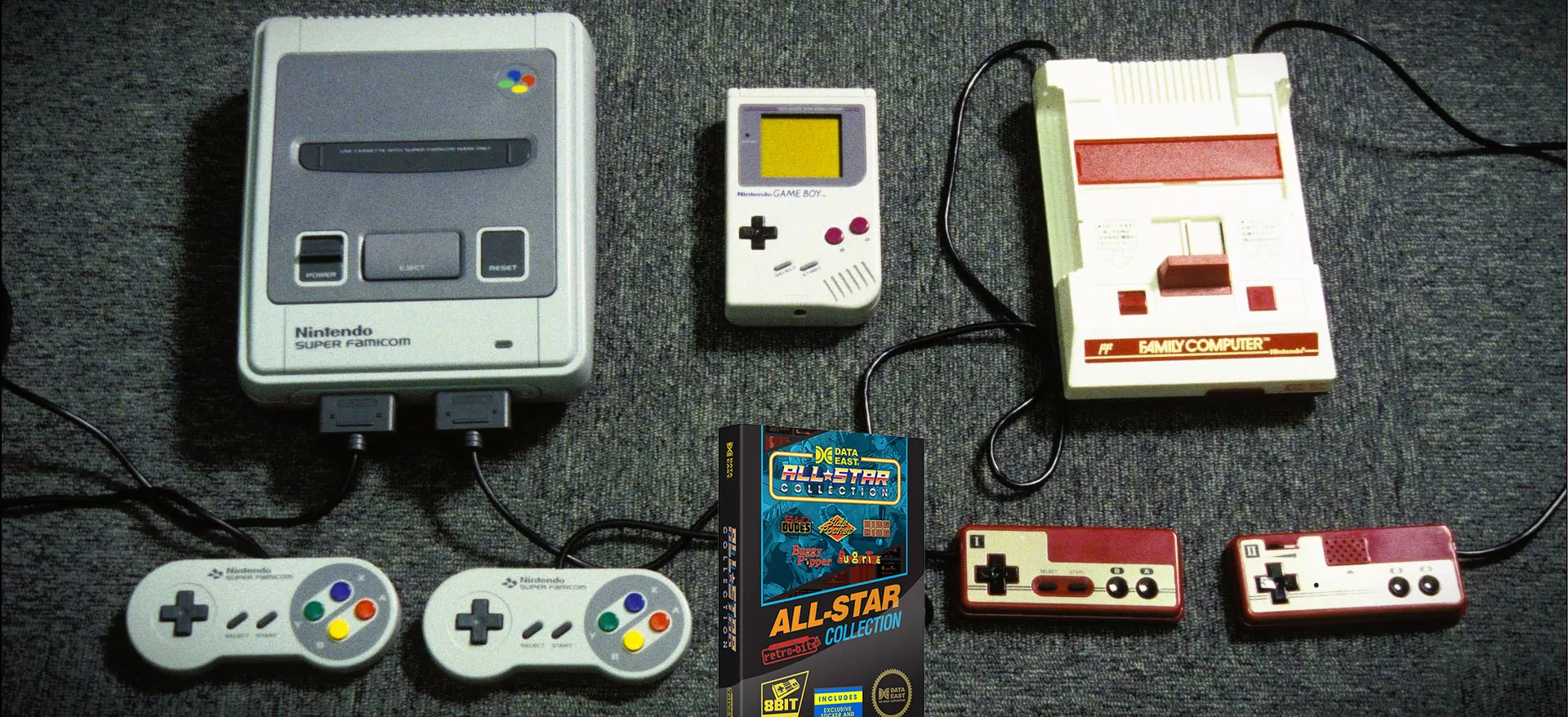In an industry that is constantly evolving and shifting away from traditional hardware, the gaming console continues to hold a mystical allure. Modern gaming consoles often serve as the focal point of entertainment in living rooms around the world. Meanwhile, a glance at the right retro gaming console can unlock a treasure trove of nostalgic memories.
Now, let’s delve into the topic at hand: the greatest video game console of all time. Before we proceed, here are a few important points to consider:
- Both handheld devices and gaming consoles are eligible for this list.
- PCs and other home computer devices like the Commodore 64 and ZX Spectrum are not included. They warrant a discussion of their own on another occasion.
- Consoles with multiple versions, such as the PlayStation 2 and PlayStation 2 Slim, are grouped together. The best iteration of each console is considered for this list.
- Only consoles that have been succeeded or discontinued are eligible. Therefore, the PS5, Xbox Series X/S, and Nintendo Switch are not currently included.
In case you’re curious, here’s a brief overview of the criteria used to determine the rankings:
- Gaming Libraries: Arguably the most crucial factor in determining the rankings. How many exceptional games did these consoles support, particularly exclusive titles?
- Hardware Reliability: Did a console suffer from any significant design flaws, or was it generally reliable?
- Historical Significance: How did a console positively impact the industry? Unit sales also play a minor role in this category.
- Innovations and Ambition: Extra credit is given to consoles that pushed boundaries and aimed for ambitious goals, even if they fell short in certain areas.
NeoGeo AES
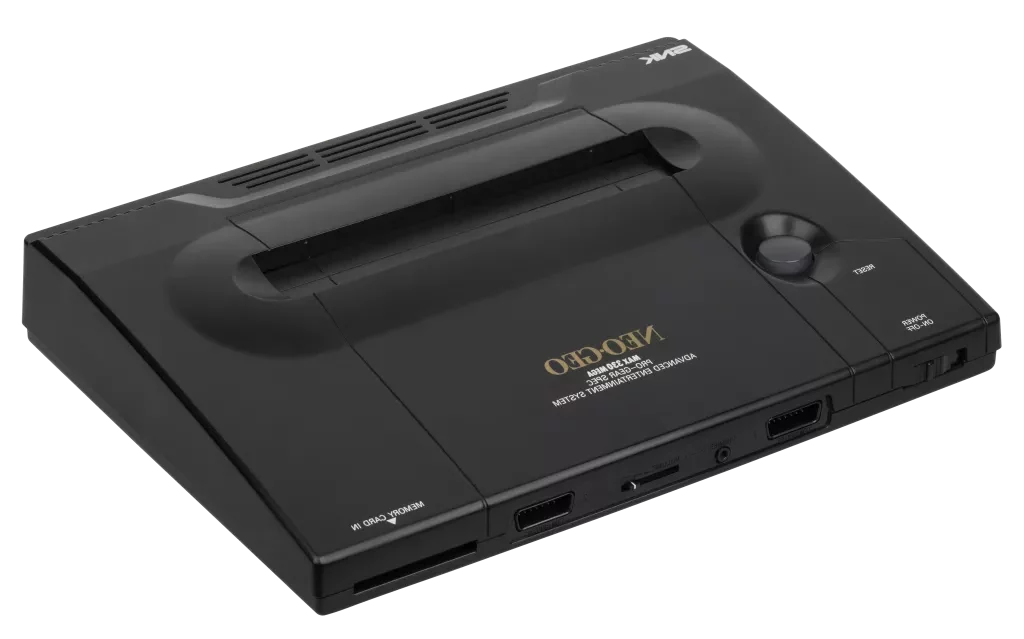
Back in 1990/1991, the NeoGeo AES came with a hefty price tag of around $650. Adjusted for inflation, that would equate to roughly $1500 in today’s currency. Just try to imagine a video game console that would be worth $1500. It’s quite a challenge, isn’t it? Well, don’t feel too bad because SNK, the company behind NeoGeo, struggled with that as well.
Despite being a logistical nightmare, the NeoGeo was undeniably intriguing as a console. SNK may have overestimated the number of people who truly desired an arcade experience in their homes, but they didn’t completely miss the mark in bringing that concept to life. The mere sight of the NeoGeo back then made you question what other console manufacturers were up to. Granted, not everyone had the opportunity to lay eyes on the console during that time, but that doesn’t diminish SNK’s pioneering efforts.
Through the years, the NeoGeo AES has remained a coveted item for collectors. It’s one of those consoles that dared to be exceptionally ambitious, even if it couldn’t fully live up to its own grand vision. Nevertheless, it delivered enough to be remembered and recognized as a notable part of gaming history.
Atari Lynx
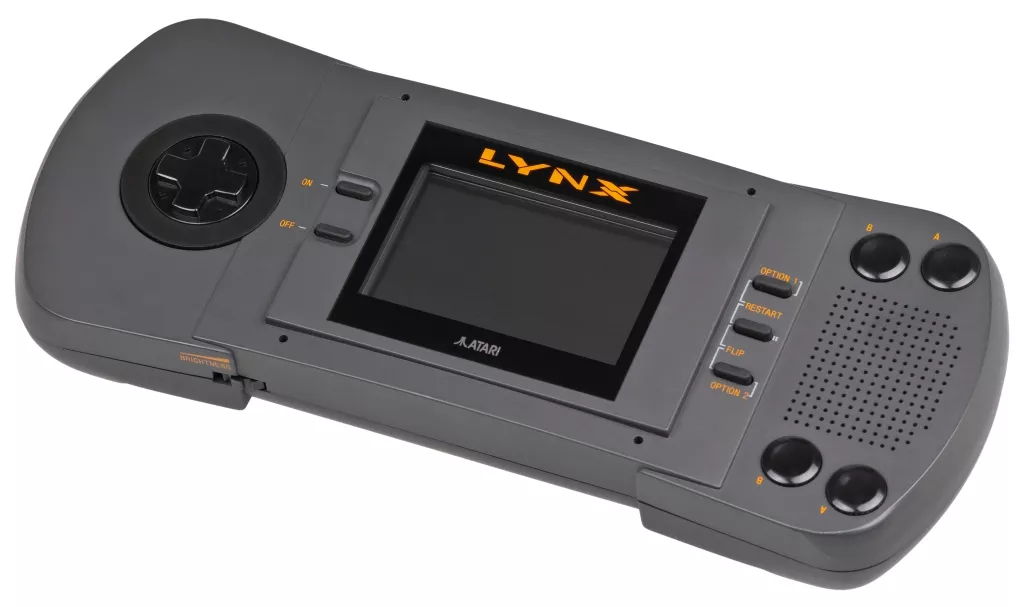
It’s often said that the Nintendo Gameboy managed to overpower the Atari Lynx even before the latter hit the market. This claim isn’t entirely unfounded. The Lynx did its best, but it couldn’t stand up to the Game Boy’s dominance. Adding to its struggles were the Lynx’s subpar battery life, design flaws, and lackluster initial game lineup, which left potential buyers questioning its worth.
However, there’s no denying that the Lynx had its fair share of impressive features. This handheld console, boasting full-color graphics, dared to imagine a world where handhelds could rival their console counterparts. It even introduced unique capabilities, like the ability to link multiple consoles for multiplayer gaming. Although hindered by design flaws, a high price point, ineffective marketing, and tough competition, the Lynx showcased Atari’s ambitious vision.
The Lynx was a commendable concept and a decent device that simply wasn’t quite suited for its era. Many other consoles cannot make that claim, as they lacked the potential and innovation demonstrated by the Lynx.
ColecoVision
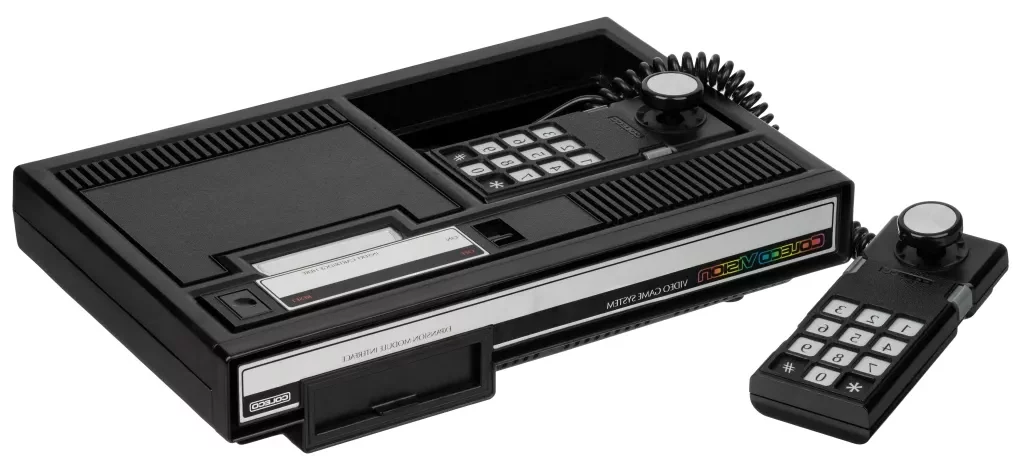
The ColecoVision made its debut in the market at a precarious time, just as the video game industry was recovering from the infamous crash of the 1980s. Undeniably, the console faced numerous setbacks and could be considered a failure by conventional measures of success for gaming platforms.
However, whenever the ColecoVision is mentioned, my mind invariably wanders to Donkey Kong. Coleco’s decision to include Donkey Kong as a bundled game with the console was met with skepticism from many. And in hindsight, their doubts were justified. Donkey Kong had the potential to be a standalone best-seller, and it wasn’t even a game developed by Coleco. In fact, the ColecoVision often relied heavily on titles in which Coleco had little to no involvement.
Despite its shortcomings, the ColecoVision aspired to deliver an unparalleled gaming experience by offering the closest approximation to arcade-quality games in the comfort of players’ homes. While it may not have achieved long-term success, those who took a chance on the console were treated to a gaming experience that dared to fulfill the dreams of early ’80s gamers.
The ColecoVision faced fierce competition from other gaming platforms and struggled to maintain its market share. Ultimately, it couldn’t sustain its initial momentum and faded away in the face of evolving technology and shifting consumer preferences. Nevertheless, the ColecoVision holds a place in gaming history as an ambitious console that aimed to bridge the gap between arcades and home gaming, leaving an indelible mark on the industry.
TurboGrafx-16/PC Engine
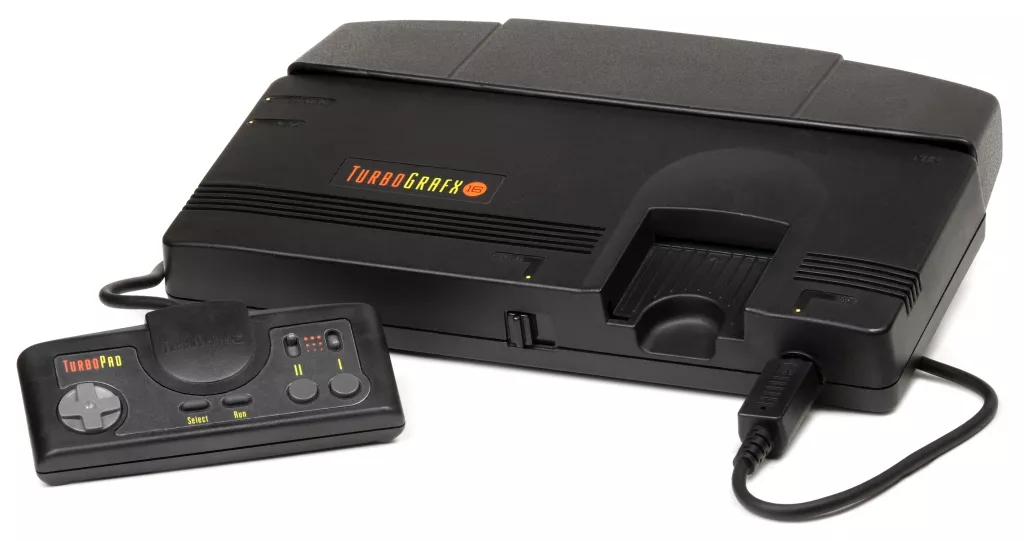
The TurboGrafx-16 is often regarded as a collection of misguided concepts. Initially released in Japan in 1987, it didn’t reach other markets until 1989-1990. While the console found surprising success as a competitor to the NES in Japan, it struggled to compete against the more advanced SNES and Genesis in other regions. The lack of support from third-party developers and the absence of a native second controller port made the hardware feel somewhat inferior. NEC Home Electronics attempted to address these issues with a series of add-ons, but it only emphasized the console’s need for rescue.
Even the console’s name wasn’t consistent. It was known as the TurboGrafx-16 in North America and the PC Engine almost everywhere else. Considering that its North American name implied 16-bit performance that the console couldn’t deliver, the PC Engine moniker may have been more fitting.
Despite its numerous problems, the TurboGrafx-16 boasted an unexpectedly strong game library. Many titles were remarkably close to arcade accuracy for the era, while others pushed the boundaries of console gaming in significant ways. Moreover, the console featured games designed to appeal to more mature gamers, a demographic that other consoles would cater to only years later.
While the TurboGrafx-16 may have been considered a disaster in many respects, it had the potential to be a genuine contender in the gaming market. It showcased innovative games and targeted a demographic often overlooked by other consoles at the time.
Bandai WonderSwan
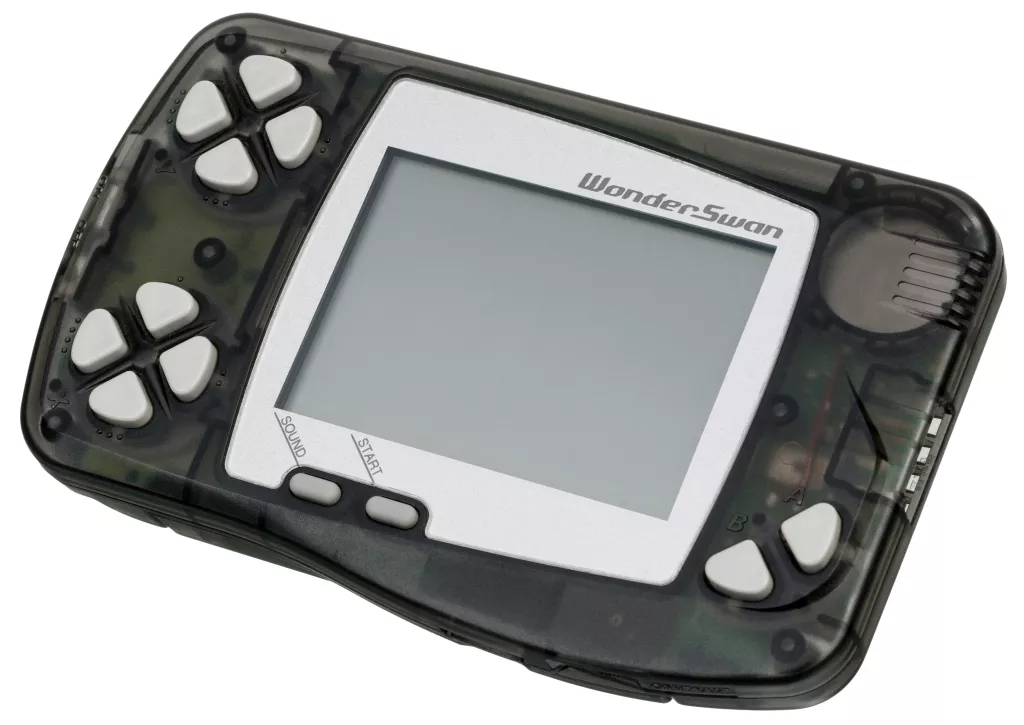
You might not be familiar with the WonderSwan, and that wouldn’t be surprising. Released exclusively in Japan in 1999, this handheld console never made its way to international markets. Despite its relative success in Japan, the WonderSwan struggled due to limited availability, intense competition, and a lack of grand ambitions. Many perceived it as a mere toy, given its affordable price and impressive battery life of approximately 40 hours on a single AA battery.
However, the WonderSwan was more than just a toy. It was a meticulously designed handheld console that never received the opportunity to thrive on a global scale. At a time when gaming was becoming increasingly complex, the WonderSwan offered simple pleasures on a dependable platform, all at an affordable price point. Its model of providing accessible gaming experiences would later prove to be a successful blueprint for early mobile game designers.
In an ideal world, the WonderSwan would have been granted the chance to reach a wider audience beyond Japan. In a far more ideal world, its creator, Gunpei Yokoi (the designer of the Game Boy), would have witnessed his humble yet capable device become a cult classic. Alas, in this world, the WonderSwan remains an enduringly underrated curiosity, often overlooked but still cherished by those who have discovered its charms.
Sega Saturn
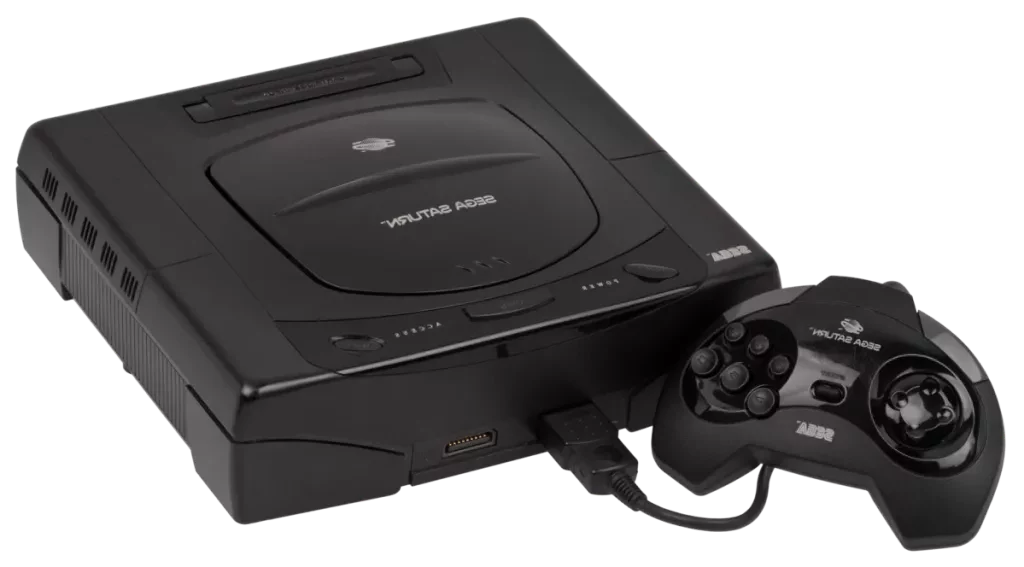
Sony’s shrewd PlayStation release strategy is often credited with dealing a fatal blow to the Sega Saturn, even before it could gain momentum. However, it must be acknowledged that Sega did little to aid the Saturn during its limited lifespan. The company struggled to attract third-party partners at a time when Sony was actively courting the industry’s biggest names. Despite Sega’s internal efforts, the Saturn lacked the necessary support to thrive. Furthermore, the absence of a proper Sonic title for the platform only compounded its challenges.
Nevertheless, the Saturn possessed tremendous untapped potential. Its remarkable controller allowed players to enjoy unparalleled arcade ports, particularly in the realm of fighting games. Games like Panzer Dragoon Saga, Dragon Force, Nights into Dreams, and Shining Force 3 pushed Sega beyond their comfort zone and into innovative new territories. While many of these titles faced commercial disappointment at the time, they likely would have fared better on rival devices.
This is the essence of the Saturn. While owning the console during its era posed challenges, those who did possess it often share nostalgic and cherished memories. If a few more elements had aligned in the Saturn’s favor, it could have easily become a more prominent player in one of the greatest gaming generations ever experienced. The Saturn remains a symbol of unfulfilled potential, leaving enthusiasts to ponder what could have been.
Atari 2600
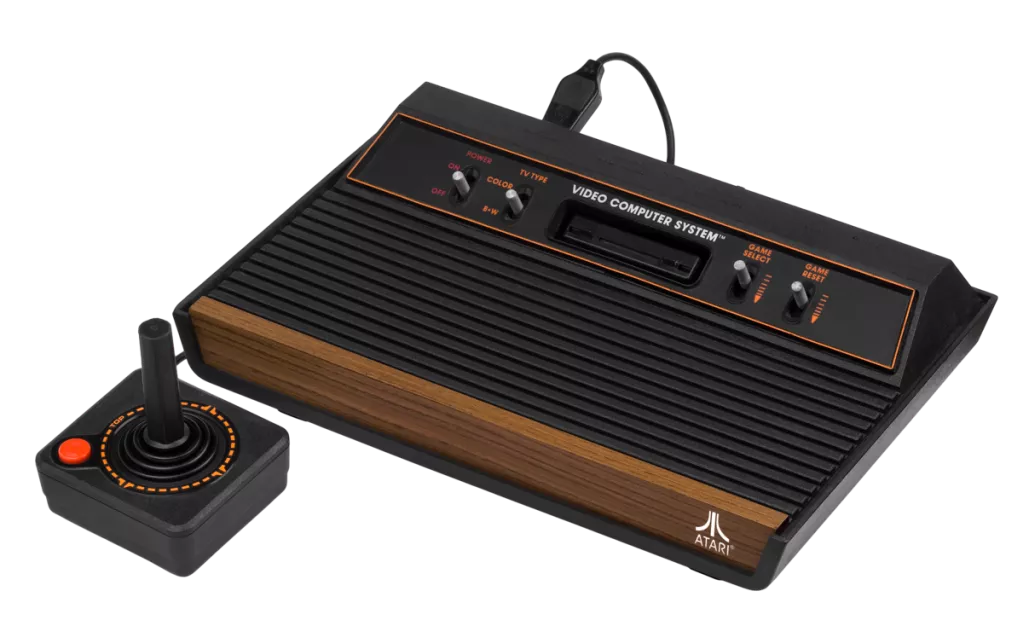
Revisiting the Atari 2600 today can be quite challenging. The passage of time has revealed its limitations, rendering it more of a relic to be appreciated and examined rather than a practical gaming system for the modern era. Even the most exceptional Atari 2600 games often fail to showcase their true potential on the console itself, as superior versions of many of these games are readily accessible on other platforms today.
Nevertheless, the Atari 2600 holds an indisputably significant place in the annals of gaming history. While not the first home video game console, it is frequently recognized as such, and rightfully so. The Atari 2600 played a pivotal role in popularizing the concept of gaming at home, making it more accessible, normal, and appealing to a wider audience. With its sleek design and functional capabilities, the console laid the foundation for the industry that this entire discourse revolves around.
While Atari’s fortunes have declined considerably over the past few decades, to put it mildly, the Atari 2600 will forever remain an iconic symbol in the chronicles of gaming. Its enduring legacy as a trailblazer and its contribution to shaping the landscape of interactive entertainment ensures its hallowed status in gaming history.
PlayStation 3
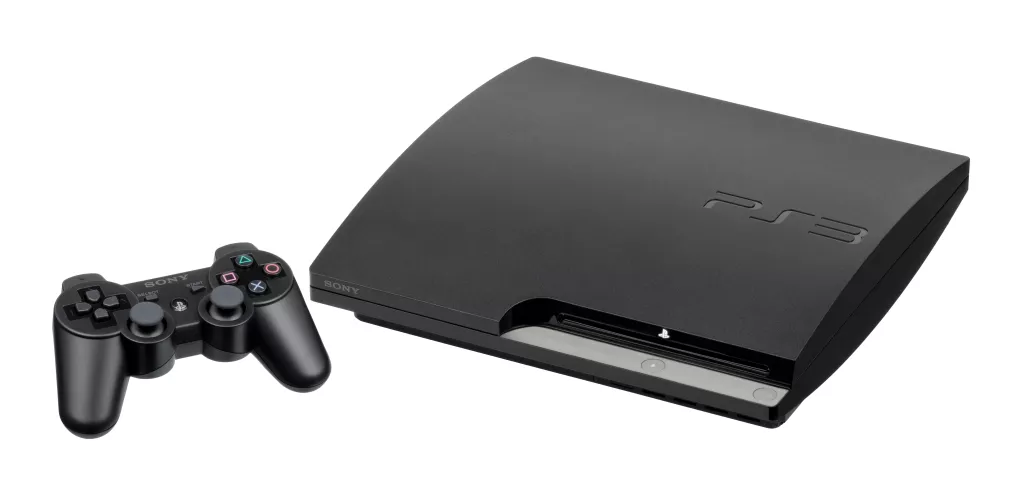
Often regarded as Sony’s most disappointing console, the PlayStation 3 faced significant setbacks during its early days. It was burdened by a high price tag, intricate hardware architecture, and a lack of key gaming features that its competitor, the Xbox 360, had successfully introduced or improved upon. Moreover, the initial lineup of games, particularly the early exclusives, failed to captivate a broader audience beyond die-hard PlayStation fans.
Nevertheless, the PlayStation 3 managed to endure and gradually recover from its initial flaws. Sony made necessary adjustments, sacrificing some of the console’s ambitious and noteworthy features, to reduce the price and make it more accessible. Concurrently, developers began to grasp the intricacies of harnessing the system’s power, resulting in notable titles that showcased the console’s potential. Games like The Last of Us, Uncharted 2, Metal Gear Solid 4, and God of War 3 emerged as standout experiences, solidifying the PlayStation 3’s significance within a fiercely competitive console generation.
Although the PS3 fell short of reaching its full potential, it transitioned from being a potential disaster to a mere footnote in the PlayStation’s rich history. While its library may not have matched the heights achieved by its predecessors and successors, the console’s redemption through notable games ensured its place as an essential part of gaming enthusiasts’ collections.
PlayStation Portable
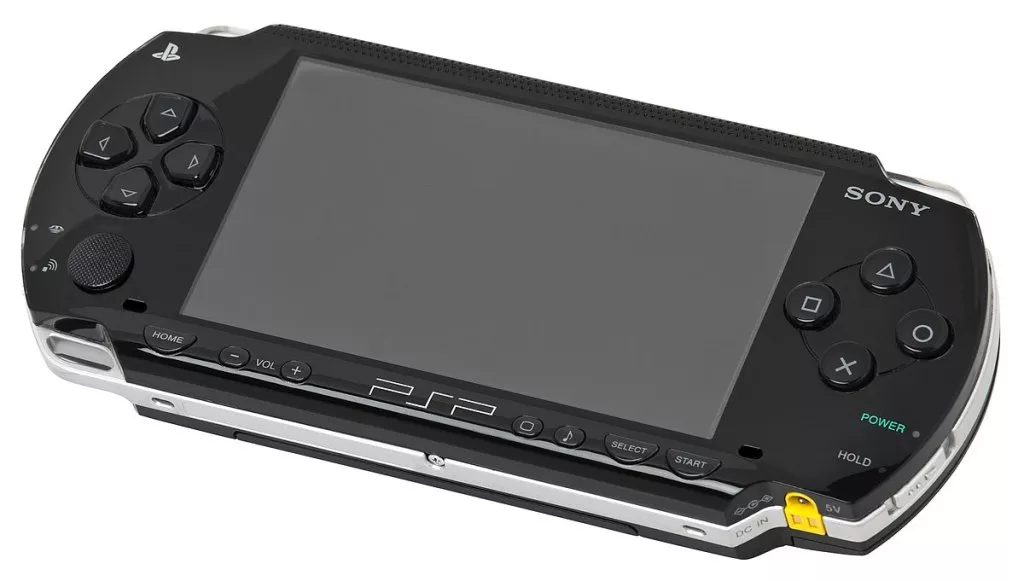
Courageous were the individuals at Sony who dared to challenge Nintendo in the realm of handheld gaming, akin to the bold soul who first savored an oyster. Though the era of Sony’s dedicated efforts in the handheld market may now seem like a distant memory, the truth remains that the PSP (PlayStation Portable) stood as an extraordinary device, amassing a remarkable sales figure of over 80 million units.
The PSP aimed to deliver a superior handheld gaming experience, and it frequently achieved that goal. Engaging with a PSP felt akin to wielding a home console in the palm of your hand, yet the platform’s library boasted a plethora of games that excelled in embracing the unique characteristics of handheld play, making them arguably best experienced on their native platform even to this day.
Undoubtedly, the PSP was not without its flaws, as certain design choices, most notably the absence of a second joystick input, garnered criticism. However, the overall excellence of the device cannot be denied, and it deserves to be cherished in our collective memories, even though it ultimately “lost” in the face of one of the most dominant handheld juggernauts ever witnessed.
The PSP’s impact on the gaming landscape endures, as it pushed the boundaries of handheld gaming and showcased the potential for high-quality gaming experiences on the go. It stands as a testament to Sony’s ambition and innovation, leaving an indelible mark on the handheld gaming industry.
Game Boy Advance
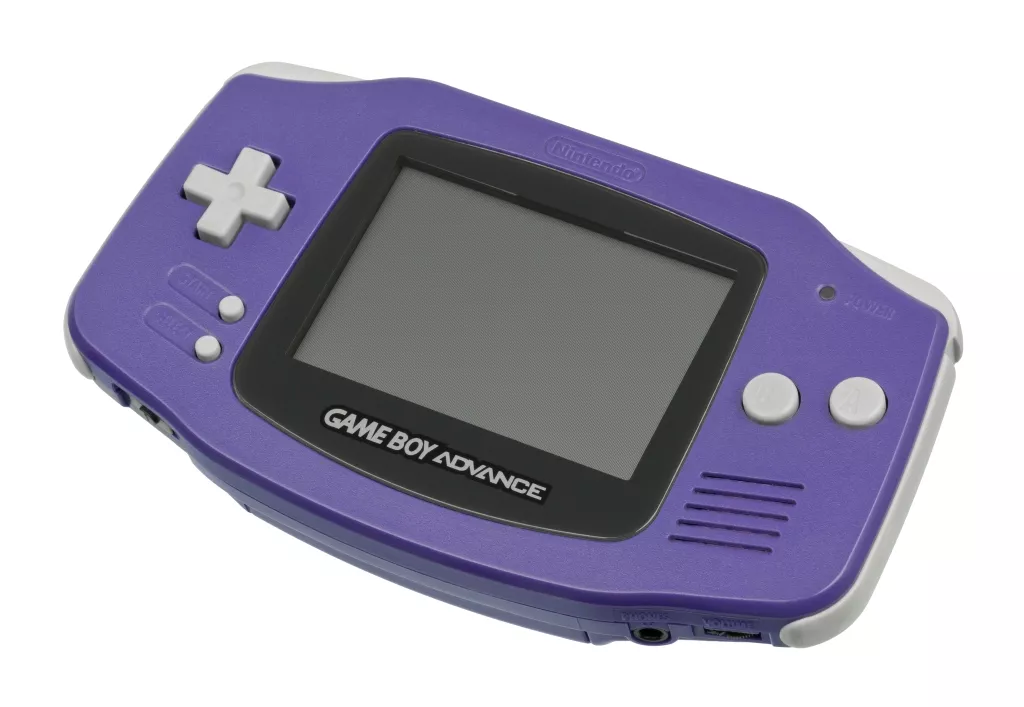
While it may have been a challenging task for the Game Boy Advance to surpass the monumental success of its predecessor, the Game Boy, it remains surprising to comprehend the relatively brief lifespan of the Game Boy Advance. Introduced in 2001, this handheld console was swiftly succeeded by the Nintendo DS a mere 3-4 years later, depending on the region. Throughout its limited existence, the Game Boy Advance faced significant scrutiny for key hardware design choices, including its battery requirements and dim screen. By the time the Game Boy Advance SP addressed some of these concerns, the fate of the handheld was already sealed.
Nonetheless, the Game Boy Advance possesses an enduring charm that continues to captivate fans. Its original design offered comfortable ergonomics, and the device boasted a level of power that often went underappreciated. This power enabled the Game Boy Advance to support SNES games and deliver experiences of SNES quality, in addition to a range of innovative handheld adventures. It accommodated timeless Mario games, introduced new RPGs, offered compelling strategy experiences, and even featured a game that harnessed the power of sunlight to aid you in your vampire-hunting endeavors.
Despite its impressive library, the Game Boy Advance struggled to maintain a presence on store shelves for more than a few years. Nevertheless, this handheld console made a lasting impact during its short tenure, thanks to its remarkable selection of games. Its influence and the memories it created endure, solidifying its position as a beloved device among gaming enthusiasts.
Nintendo Wii
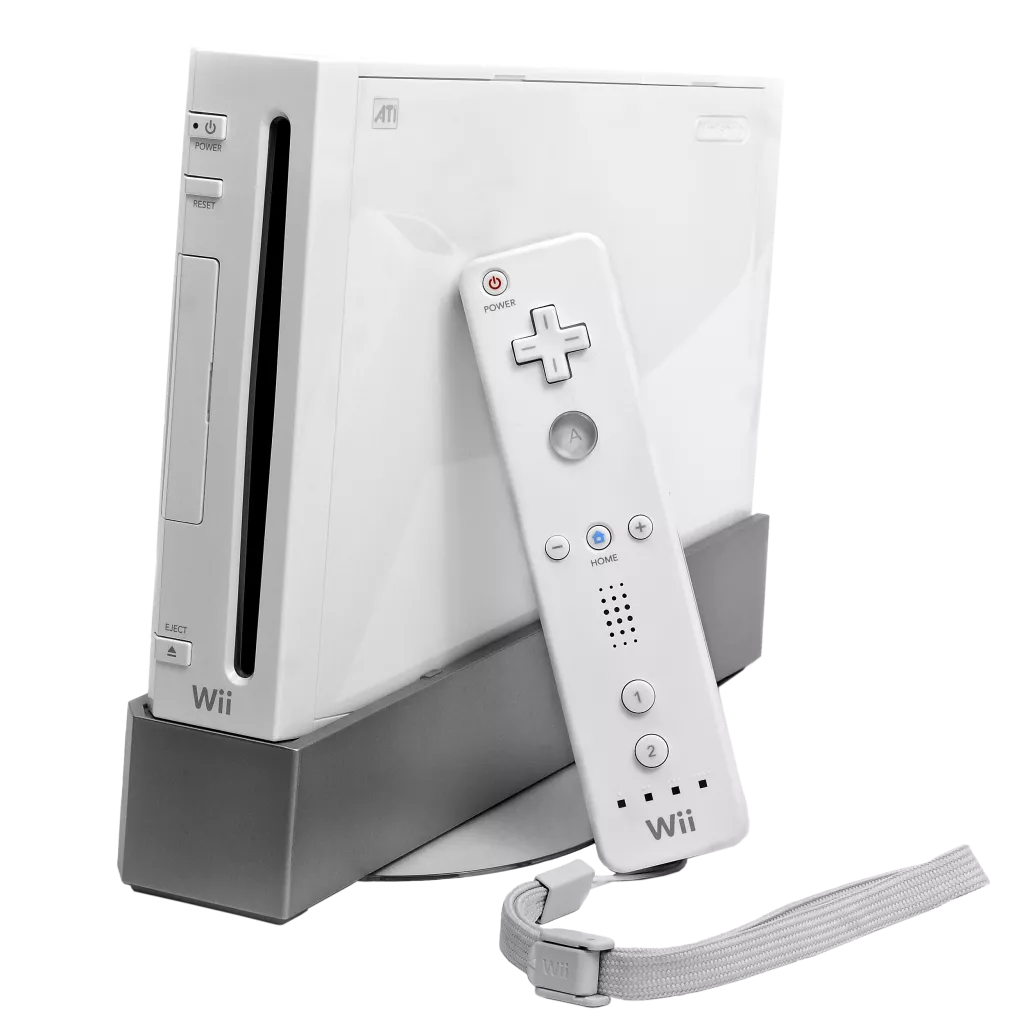
The Nintendo Wii holds a special place in gaming history, often feeling like a shared fever dream. It’s hard to forget the time when nearly everyone was captivated by a handful of motion-controlled games. And who can overlook the memorable moment when your grandma outperformed you in Wii Sports? Despite selling over 100 million units, the Wii occasionally receives treatment closer to that of a novelty than a substantial gaming console.
Nevertheless, few consoles have ever made such a swift and profound cultural impact as the Wii did. It showcased the widespread enthusiasm and readiness of people to embrace gaming, igniting a boom period that revitalized the entire industry. Admittedly, the Wii faced challenges in terms of limited third-party support—a recurring theme in this list. However, its most exceptional exclusive titles are often unjustly overlooked even today.
Although the Wii’s motion controls may have transitioned from being perceived as a novelty to sometimes becoming an annoyance, it undeniably earned its status as a phenomenon and remains a fundamentally enjoyable piece of gaming hardware. Its significance extends beyond mere sales figures—it reshaped the way people interacted with games and opened the doors to a wider audience. The Wii’s enduring appeal lies in its ability to deliver fun experiences, reminding us of its remarkable journey and the joy it brought to countless households.
PlayStation Vita
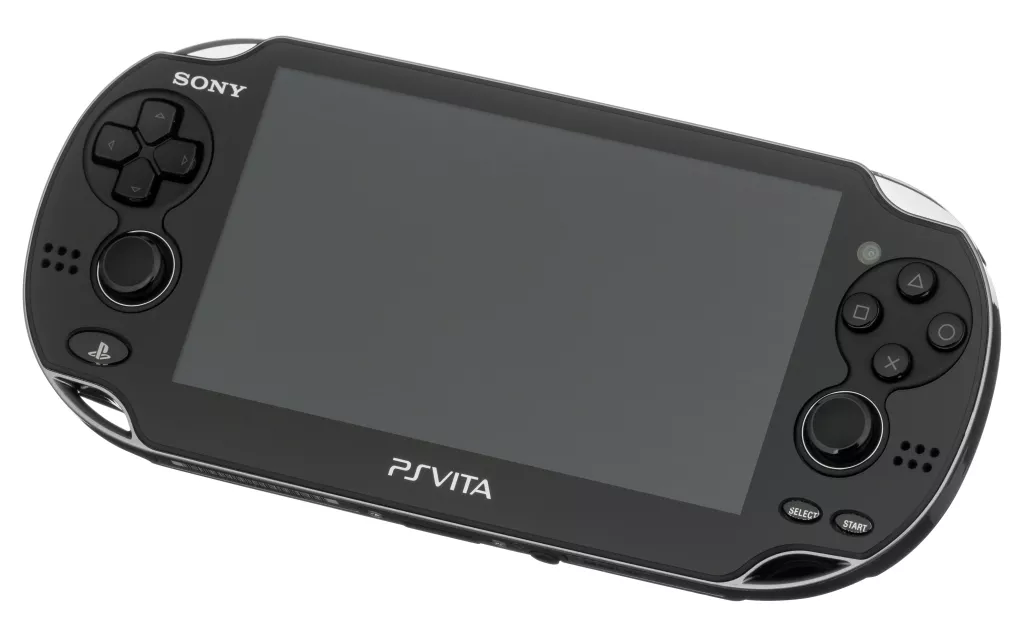
Similar to the PlayStation 3, the PlayStation Vita faced significant hurdles right from the start due to its high price point and complex architecture. Despite having an opportunity to capitalize on the shortcomings of the 3DS, Sony struggled to attract the crucial third-party support necessary for the handheld to thrive.
Nevertheless, the Vita stood as an exceptional piece of hardware. It boasted impressive power, boasted an ergonomic design that felt comfortable in the hands of players, and even offered the innovative feature of PS4 remote play when it was still a novelty. Although the Vita’s game library ultimately remained relatively small, it harbored a collection of underrated gems that mirrored the handheld itself. From stellar ports of titles like Hotline Miami and Persona 4 to unique entries in well-known franchises such as Uncharted: Golden Abyss and Killzone: Mercenary, the Vita seamlessly combined elements of high-quality console experiences with the charm of handheld gaming.
Regrettably, the Vita faced a rough start and struggled to garner the support it desperately needed to thrive in the dwindling handheld market. However, it is evident why the handheld has continued to grow in acclaim over time. The Vita’s undeniable potential and the distinct experiences it delivered have only served to enhance its reputation, cementing its status as a beloved device among a dedicated group of enthusiasts.
Sega Dreamcast
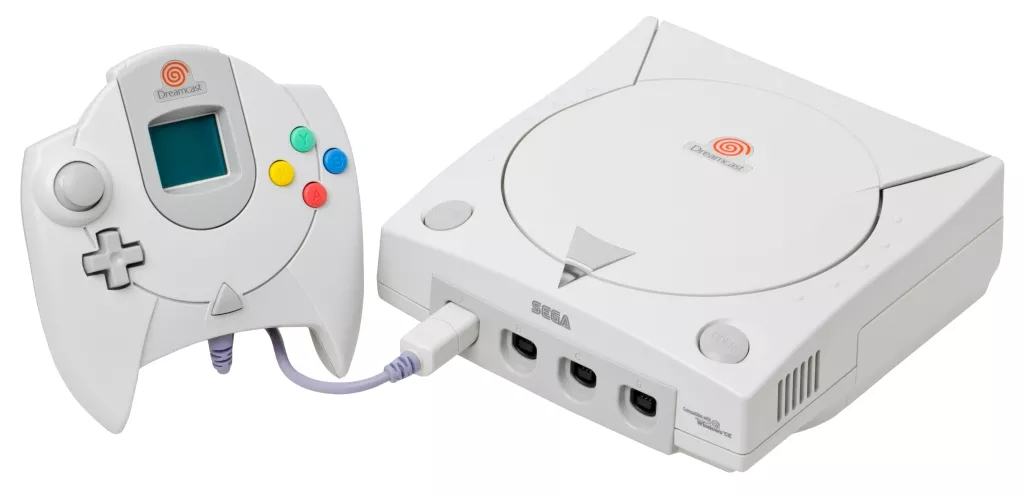
When discussing the Dreamcast, it is difficult to avoid using the word “underrated.” However, it is important to acknowledge that some of the significant issues that ultimately led to the console’s abrupt downfall are often overlooked by its staunch supporters. The Dreamcast suffered from an unwieldy controller design (at least for some users), inadequate third-party support, and limited multimedia functionality. Additionally, its peculiar release window contributed to its relatively rapid obsolescence.
Nevertheless, the story of the Dreamcast remains a tragic one. It was a pioneering console that embraced online capabilities and offered faithful arcade experiences. The console supported a multitude of games that were as daring as the hardware itself. In many respects, one could argue that the Dreamcast represented the pinnacle of Sega’s innovative ideas that made the company a force to be reckoned with. Even today, nothing quite captures the essence of the Dreamcast, despite other consoles eventually borrowing many of its best concepts.
Understanding the reasons behind the Dreamcast’s failure is relatively straightforward, but coming to terms with them can be challenging. It was an exceptional console that prioritized fun and innovation above all else. The Dreamcast’s legacy endures as a testament to its greatness, captivating the hearts of those who appreciate its unique contributions to gaming history.
Nintendo GameCube
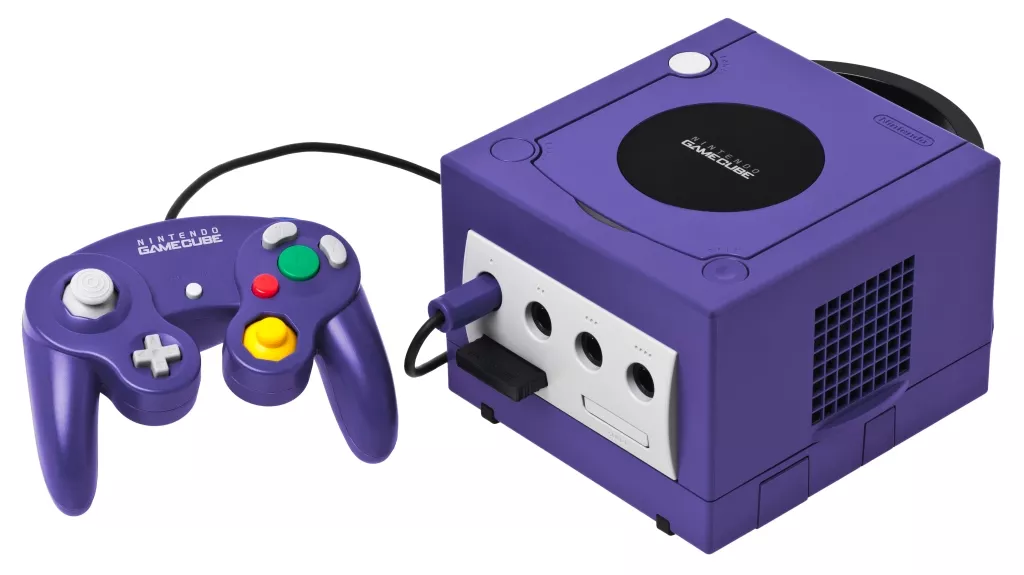
When considering pure sales figures, the GameCube is often deemed a historic disappointment. It not only fell behind its competitors, the Xbox and PlayStation 2, but it also caused Nintendo to lose significant momentum and several key third-party partnerships. The struggles of the GameCube forced Nintendo to reassess its approach to the industry it once played a vital role in popularizing.
However, try conveying any of this to a GameCube enthusiast. Those who owned a GameCube, or even those who have revisited the console since its demise, prefer to discuss its remarkable game library. Titles such as The Legend of Zelda: The Wind Waker, Super Mario Sunshine, Resident Evil 4, Super Smash Bros. Melee, and Metroid Prime overshadow any perceived shortcomings of the console. In fact, the GameCube’s library of games often overshadows any criticisms, and its true strengths become apparent. Additionally, the console’s power capabilities were frequently underestimated, and it supported one of the finest controllers ever created—the WaveBird Wireless.
Had Nintendo addressed a few key flaws of the GameCube, such as online gaming, multimedia support, and consistent third-party releases, the narrative surrounding the console would be markedly different today. Despite its commercial setbacks, the GameCube’s enduring legacy lies in its outstanding collection of games and its untapped potential. It serves as a reminder of the console’s untapped potential and the fervent loyalty it continues to inspire among its dedicated fanbase.
Sega Genesis
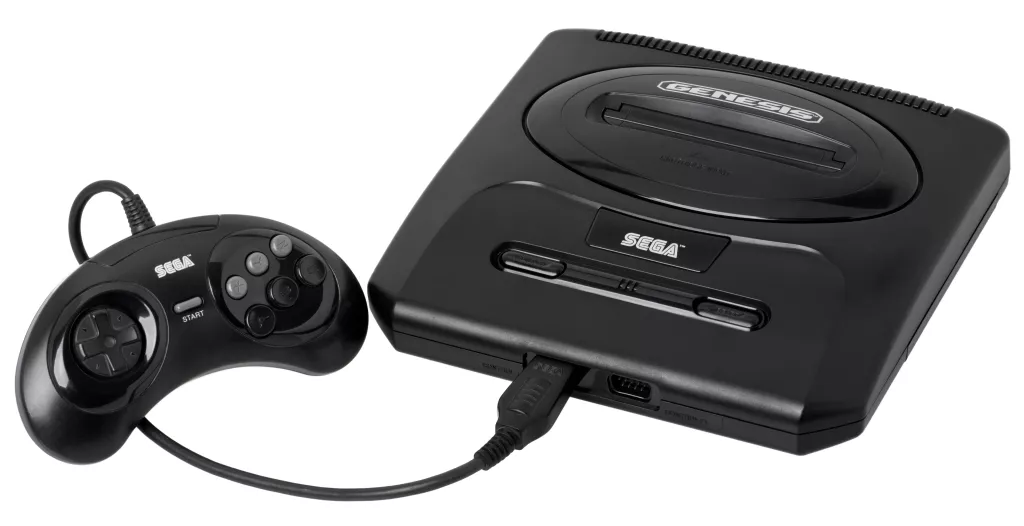
The Genesis stands as a prime example of a “challenger brand” in the console market. Rather than aiming to overthrow the market leader or target a niche audience, a challenger brand seeks to occupy a significant space that the current leader is not serving.
Guided by the motto “Genesis does what Nintendon’t,” Sega ensured that the Genesis offered everything the SNES did not. It provided arcade-like experiences, embraced violence, and prioritized faster gameplay. The Genesis was designed to disrupt the expectations of NES and SNES fans, and it consistently succeeded in doing so. Even today, many of the Genesis’ best games exude a refreshing and distinct appeal.
While Sega was unable to replicate the success of the Genesis in subsequent endeavors, the console served as an essential contender for gamers who may not have realized how much they needed an alternative option. The Genesis offered a compelling alternative to those seeking a different gaming experience, and its impact on the industry cannot be understated. It pushed the boundaries, broadened the horizons of gaming, and cemented its place in the hearts of many gaming enthusiasts.
Xbox
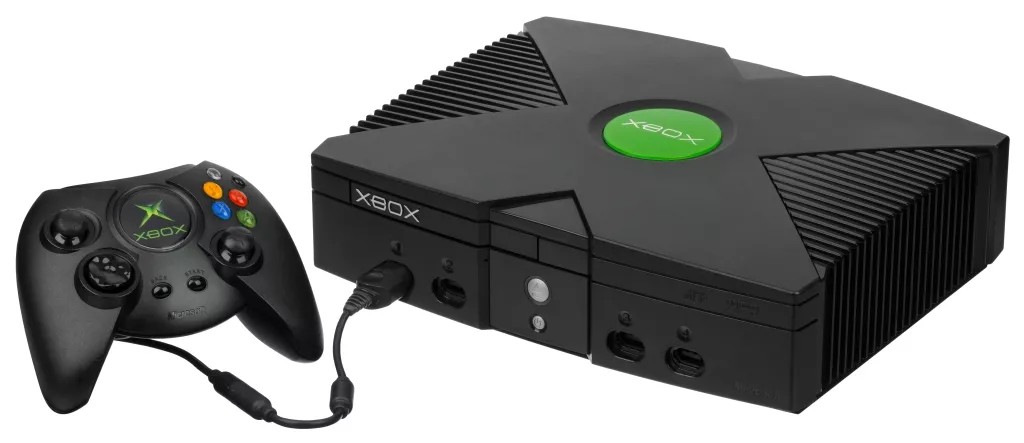
The Xbox and its association with Halo: Combat Evolved are forever intertwined. Considered one of the greatest and most significant launch games of all time, Halo, and its sequel Halo 2, served as compelling reasons for millions of new fans to own an Xbox.
However, the Xbox’s contributions extend far beyond the realm of Halo. It deserves recognition for its role in bridging the once-substantial gap between PC and console gaming. Not only did the Xbox introduce proper online play to a vast audience who had yet to experience it, but it also persuaded notable developers like Bethesda, BioWare, and Peter Molyneux to bring PC-like experiences to console gamers. Additionally, the Xbox’s impressive hardware power often made it the optimal platform for playing various noteworthy third-party titles.
It can be argued that the Xbox was merely a few standout franchises and additional features away from making an even more substantial impact than it did. Nevertheless, its influence on the gaming landscape remains significant. The Xbox’s legacy lies not only in the iconic Halo series but also in its role as a catalyst for transforming the gaming industry, fostering the convergence of PC and console gaming experiences.
Nintendo 64
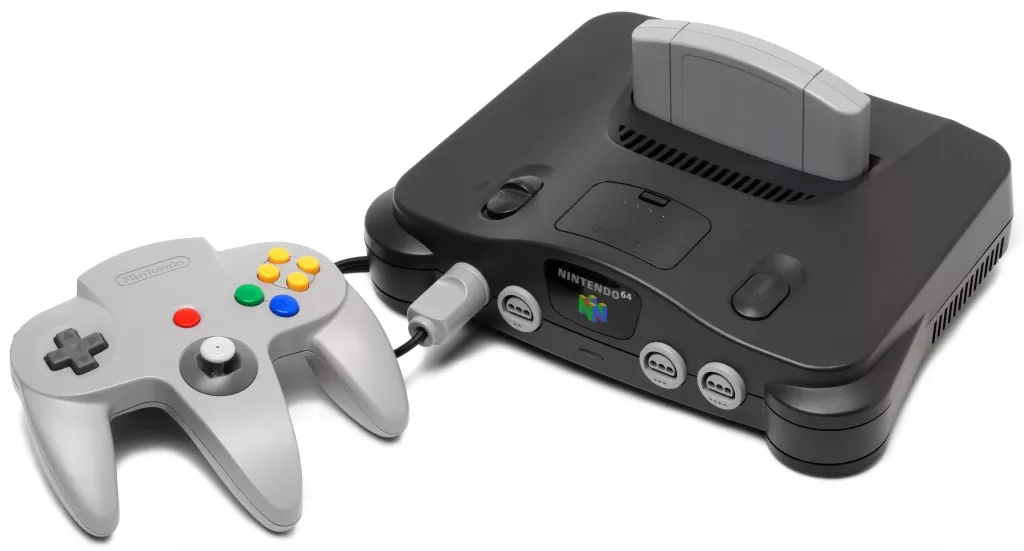
Nintendo had high ambitions for the N64, hoping for greater success than it ultimately achieved. Unfortunately, a combination of mistakes and circumstances led Nintendo to lose ground to Sony from the start, making it difficult to recover. However, the N64’s market setbacks unexpectedly turned it into a fascinating alternative to the PlayStation 1, establishing its own significant legacy.
The moment players experienced Super Mario 64, they were convinced of the power and potential of 3D gaming. Nintendo and its partners capitalized on the N64’s unique technical capabilities, pushing the boundaries of 3D gaming and contributing to the foundational elements of modern game design.
Nevertheless, the N64’s greatest triumph lies in its unparalleled collection of local multiplayer games. No other console before or since has emphasized the joy of sharing a room and screen with friends quite like the N64. While titles such as Ocarina of Time showcased the console’s greatness, it was games like GoldenEye, WWF No Mercy, and Mario Kart 64 that brought neighborhoods together, with kids rallying around the house that owned an N64.
The N64 may not have reached the commercial heights Nintendo desired, but its impact on the gaming industry and its ability to create memorable multiplayer experiences cannot be denied. It carved its own unique path, leaving an indelible mark on the hearts of players who cherish the nostalgia and camaraderie fostered by its exceptional game library.
PlayStation 4
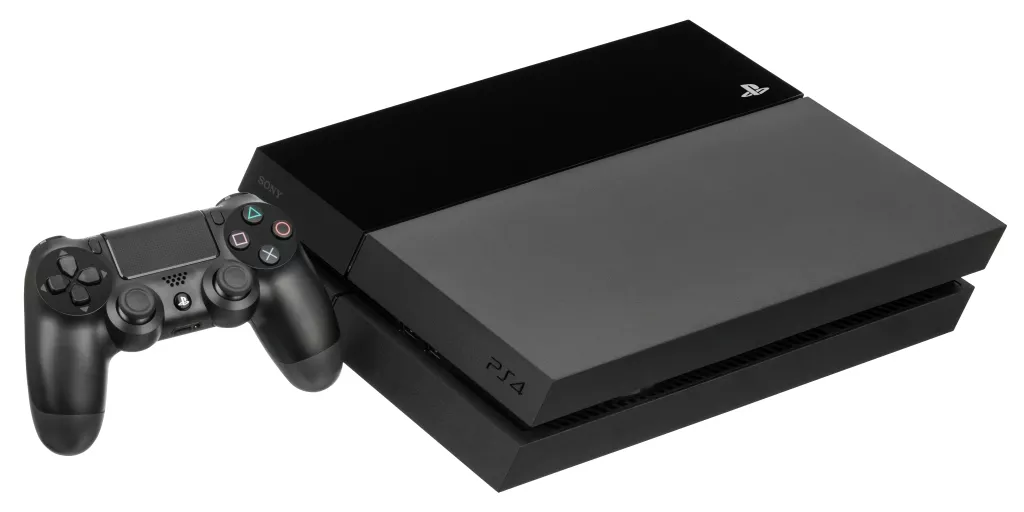
Ironically, one of the PlayStation 4’s notable “weaknesses” stemmed from its lack of direct competition. Throughout its impressive 6+ year run, the PS4 stood as the dominant console in the market, offering a superior overall gaming experience. The console’s exceptional qualities were so apparent and consistent that it is easy to overlook just how remarkable it truly was.
The PS4 addressed and rectified the majority of the shortcomings that plagued its predecessor, the PS3. Moreover, it also learned from the missteps made by Microsoft with their original plans for the Xbox One. While the Xbox brand struggled to make waves in the ever-evolving gaming industry, the PS4 presented a straightforward, well-crafted, and reasonably priced gaming console. Its simplicity and reliability attracted some of the world’s best developers, resulting in a vast library of unforgettable games.
Though the PS4 fell short in certain consumer-friendly features, such as backward compatibility and consistent crossplay support, these aspects remain blemishes on an otherwise stellar legacy. Undeniably, the PS4 stands as one of the most definitive winners in the console wars throughout gaming history.
The PS4’s impact on the industry, its extensive game library, and its status as the go-to choice for gaming enthusiasts underscore its remarkable success. As the curtains closed on its reign, the PS4 left an indelible mark as a standout console that elevated the gaming experience to new heights.
Nintendo Game Boy
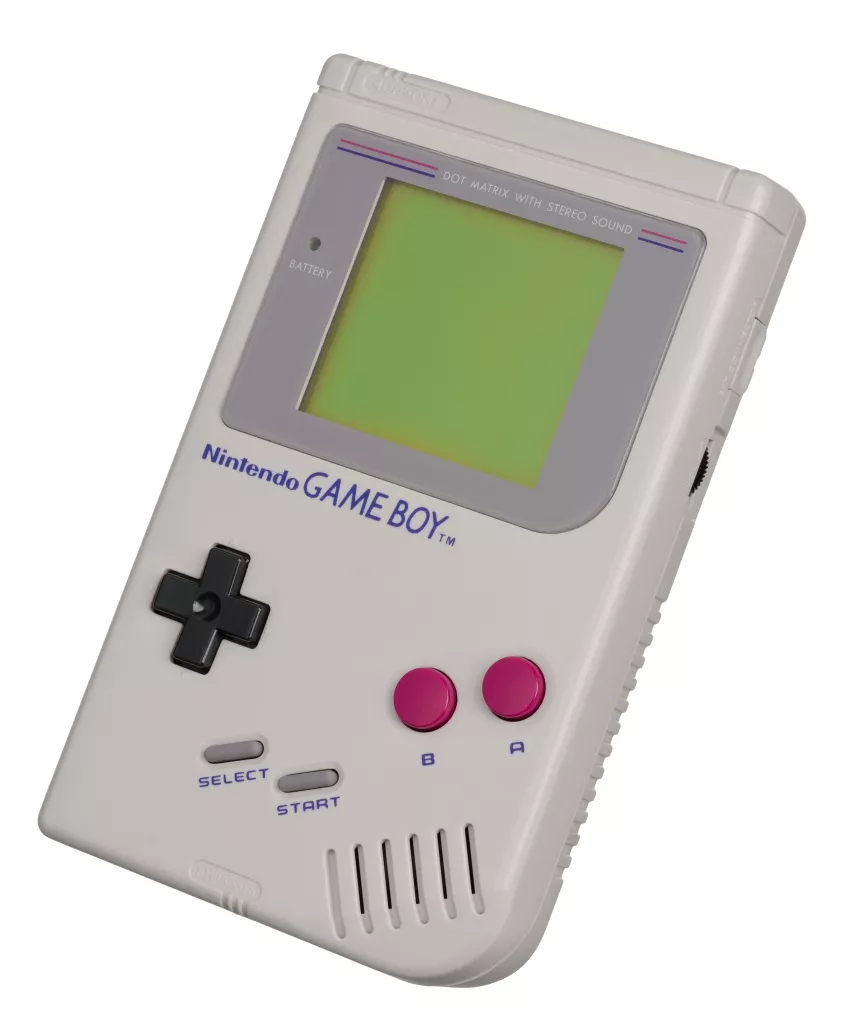
There is little dispute that the Nintendo Game Boy holds the title of the most significant handheld gaming console ever created. The leap in quality it offered compared to its predecessors is truly astounding, and one could even argue that it still stands as the greatest handheld gaming console of all time.
In fact, there comes a point where it becomes difficult to classify the Game Boy as “just” a handheld device. For many, it served as the sole gaming system they ever needed for a considerable period. Even as more powerful devices emerged, the Game Boy’s exceptional design and Nintendo’s unwavering commitment to quality allowed it to remain a relevant force in the industry far longer than most other consoles. If you weren’t still engrossed in playing Pokémon on your Game Boy in the late ’90s, what were you doing?
Admittedly, the Game Boy’s technical limitations became more apparent towards the end of its lifespan. However, it is highly doubtful that we will ever witness another gaming device that remains as relevant and influential for such an extended duration. The Game Boy’s enduring legacy and continued relevance are a testament to its impact on the industry and the unparalleled experiences it delivered to countless players.
The Game Boy will forever hold a special place in gaming history, not just for its technical accomplishments, but also for its ability to capture the hearts of gamers and provide countless hours of portable gaming enjoyment. It stands as a testament to Nintendo’s enduring dedication to innovation and quality that has shaped the landscape of handheld gaming.
Nintendo Entertainment System
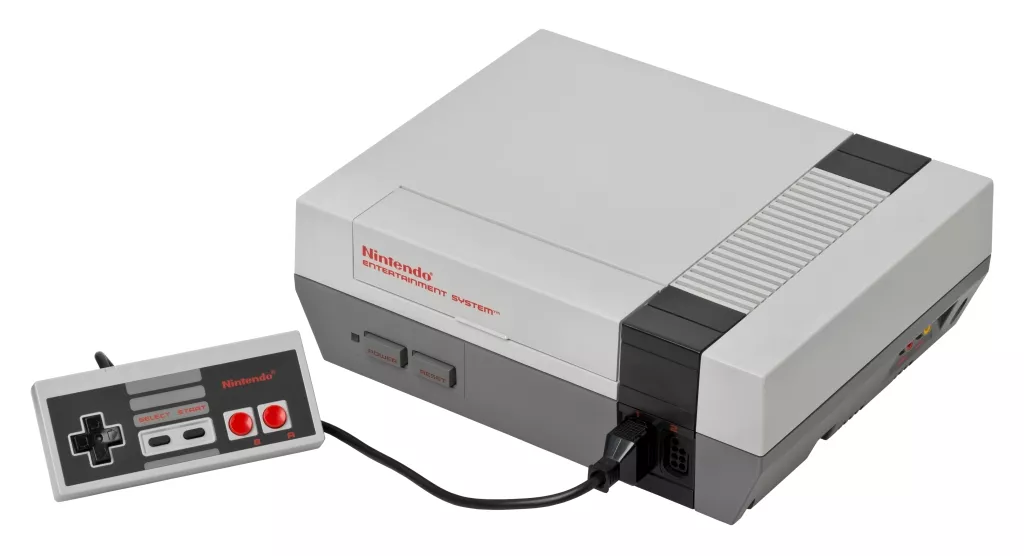
The NES holds an exceptional place in gaming history, as it not only saved the industry from a perilous state but also established a path that the rest of the gaming industry continues to tread upon today. During a time when the demand for video game consoles was uncertain, Nintendo successfully persuaded millions of people that owning a video game console was a necessity. The strategies and techniques employed by Nintendo to achieve this incredible feat have been emulated and reimagined in countless ways since the NES’s debut several decades ago.
What truly impresses me about the NES is how remarkably relevant its games still feel to this day. I’m not just referring to the broad design ideas introduced by the best NES titles. In recent years, numerous notable games have been deliberately designed to resemble, sound like, and play akin to NES titles. One could even argue that some iconic franchises, such as Mega Man, are at their very best when experienced on the NES.
Admittedly, the NES faced its fair share of notorious technical issues, and Nintendo eventually allowed the console to be inundated with subpar titles. However, the NES remains a magical part of gaming’s history and stands as the oldest console that one can likely still enjoy to this day. It continues to evoke a sense of nostalgia and holds a special place in the hearts of gamers, serving as a testament to the enduring charm and enduring legacy of the console.
Xbox 360
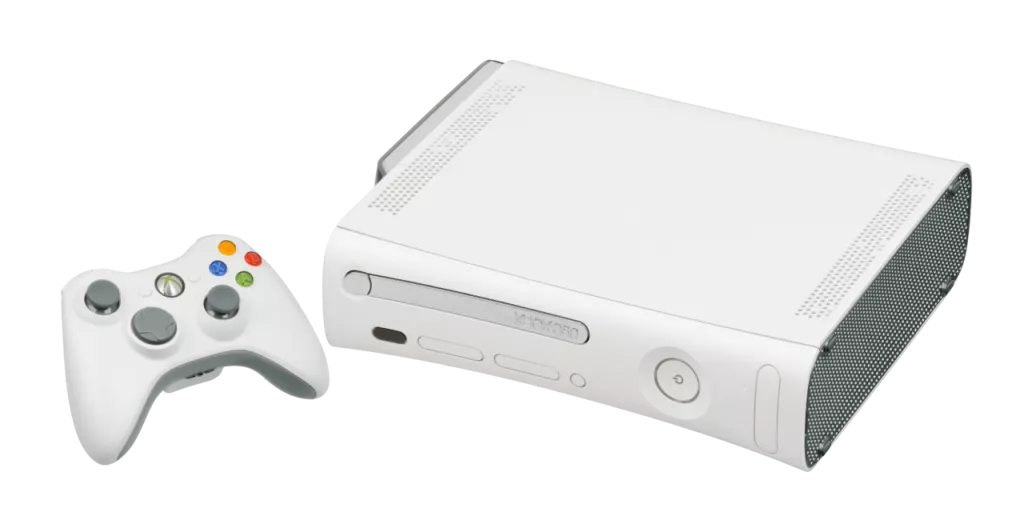
To be completely frank, the Xbox 360 could have claimed an even higher rank if not for the notorious “Red Rings of Death” issue, which stands as one of the most significant design flaws in modern gaming hardware history and remains a blight on the console’s legacy.
Putting aside this considerable setback, the Xbox 360 may very well be hailed as the greatest console ever crafted. While Sony struggled with the PS3 and Nintendo offered a unique alternative with the Wii, Microsoft stepped up to the plate and delivered a fastball down the middle with the Xbox 360. It possessed impressive power, an exceptional controller, and soon amassed an outstanding collection of exclusive titles as well as remarkable versions of beloved third-party games.
Yet, the Xbox 360’s most significant contributions were not limited to conventional console design. Xbox Live Arcade made indie gaming thrive in the modern age, while Xbox Live Marketplace propelled us into the digital era. The console’s achievement awards introduced a metagame element to the industry that continues to thrive to this day. The Xbox 360 forced everyone to take notice and sparked a revolution, leaving an enduring impact that we still reap the benefits of today.
Despite its unfortunate hardware issue, the Xbox 360’s pivotal role in shaping the gaming landscape cannot be underestimated. It propelled the industry forward, redefining the possibilities of console gaming and establishing new paradigms for connectivity and digital distribution. The Xbox 360’s legacy remains palpable, as its contributions continue to resonate within the gaming community.
Sony PlayStation
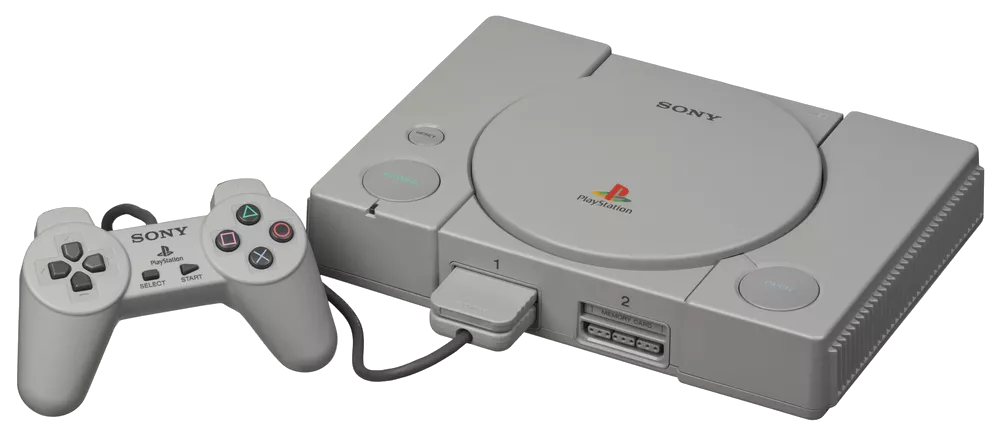
Despite swiftly outperforming its primary competition, the Sega Saturn, Sony never rested on its laurels when it came to the PlayStation. The company’s continuous efforts to innovate and evolve helped establish it as a major player in the gaming industry, while also reshaping the expectations of gaming hardware.
The PlayStation’s multimedia capabilities and its impressive library of mass-market masterpieces turned it into a central fixture in entertainment centers worldwide. Unlike the Wii, which relied on gimmicks to capture the attention of casual gamers, the PlayStation focused on its functionality and Sony’s commitment to cinematic presentation. This approach inspired a broader audience to perceive gaming in ways they had not previously considered. Moreover, the PlayStation’s esteemed developers had the freedom to explore their grandest and most groundbreaking ideas, captivating new audiences who were more open than ever to redefining the concept of video games. Even today, many individuals harbor nostalgia for the console’s distinctively blocky visuals.
It is a testament to the N64’s quality that the PlayStation is not unequivocally recognized as the definitive cultural victor of its generation. From its innovative controller to its exceptional game library, nearly every aspect of the PlayStation exudes a wonderfully modern appeal while still retaining its retro charms. The console’s enduring popularity and continued reverence are a testament to its enduring impact and the enduring legacy it has left on the gaming landscape.
Super Nintendo
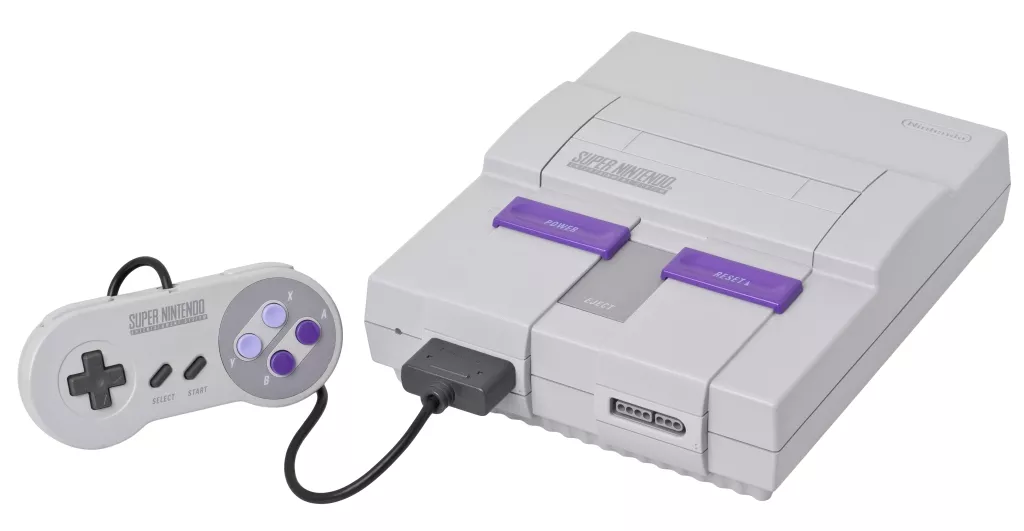
The SNES faced its own set of formidable challenges, which should not be underestimated, despite the difficult position the NES encountered. During the early ’80s, many gamers had experienced disappointment with subsequent consoles that offered diminishing returns, casting doubt on the notion that newer meant better. While the NES was remarkable, the question remained: Did people truly need a “super” Nintendo?
In hindsight, the answer to that question is an emphatic “yes.” The Super Nintendo not only delivered superior versions of beloved NES games but also introduced groundbreaking experiences that surpassed anyone’s wildest imaginations. The SNES can be aptly described as a dream factory.
Perhaps it sounds somewhat cliché, but that does not diminish its truth. The SNES instilled a belief that gaming had the capacity to evolve alongside new technology, surpassing all expectations. It was a platform that showcased wildly entertaining games alongside works of absolute art, which have only grown in power and poignancy over the years. The unity of exceptional talent that gravitated toward the SNES is a phenomenon that may never be replicated in quite the same manner again.
The SNES remains a testament to the remarkable creativity and collective vision of game developers who harnessed the console’s capabilities to craft unforgettable gaming experiences. It fostered an environment where artistic expression and technical innovation flourished hand in hand. The SNES stands as a pinnacle of gaming excellence, forever etching its place in history as a cherished platform that shaped the industry and captivated the hearts of gamers worldwide.
Nintendo DS
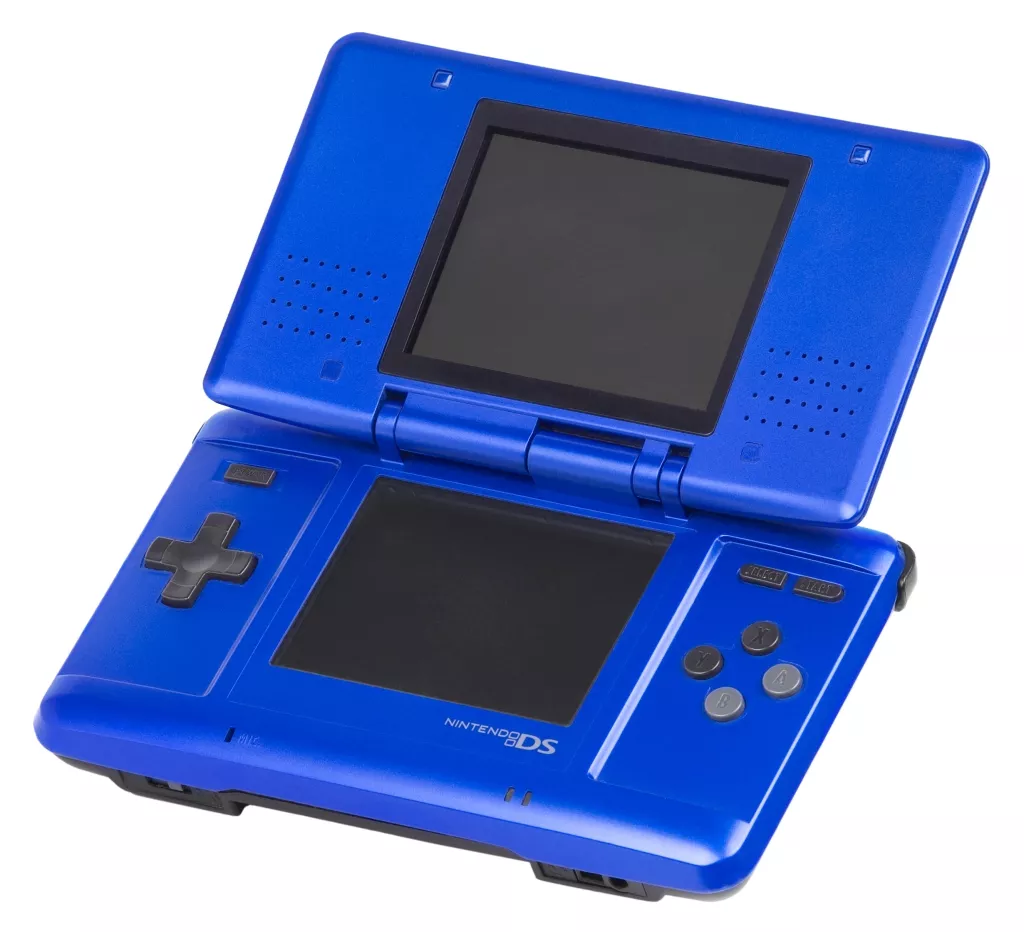
The Nintendo DS can be likened to a Trojan Horse, as its main marketing gimmicks were the dual screens and touchscreen capabilities. However, the true strength of the Nintendo DS lay in the astonishing quality of its game library.
Arguably, the Nintendo DS is the last Nintendo console that is not solely defined by the excellence of its first-party games. While the first-party titles were undeniably exceptional, they were just the tip of the iceberg. Esteemed developers such as Capcom, Konami, Atlus, Level-5, and many others brought their finest offerings to the handheld. The platform not only brought out the best in these developers but also served as an inspiration for renowned talents to conceive entirely new and innovative gaming experiences. Remarkably, over 150 million individuals joined this gaming revolution.
Considering the trajectory of the handheld gaming market, it is highly likely that the DS will ultimately be hailed as the greatest standalone handheld gaming device ever created. Its incredible library of games, combined with its unique dual-screen and touchscreen capabilities, solidified its place in gaming history. The Nintendo DS not only provided a platform for exceptional gaming experiences but also showcased the power of handheld gaming to captivate and engage millions of players worldwide.
PlayStation 2
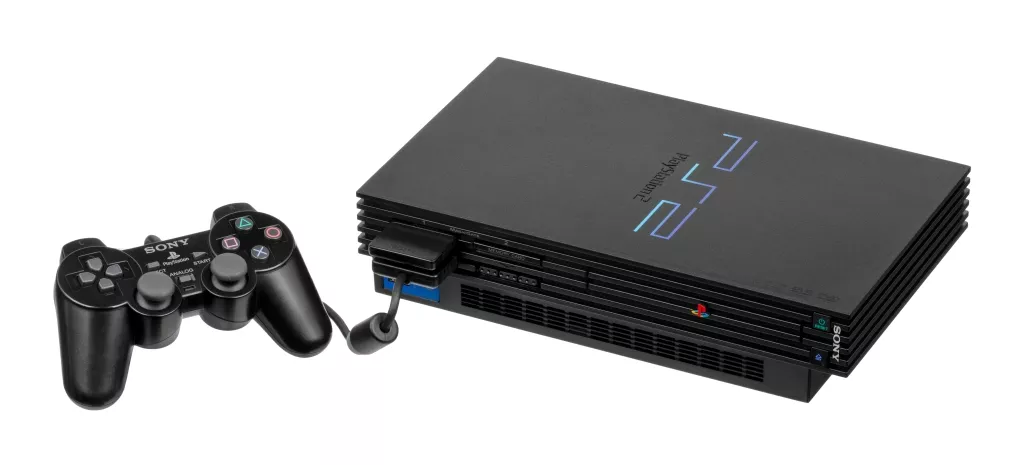
I attempted to make a case against the notion that the best-selling video game console also stands as the best video game console. However, when you consider the overwhelming support of over 155 million people, it becomes clear that they were onto something. The PS2 undeniably represents the pinnacle of console gaming.
Sure, we can discuss the intangible factors. The inclusion of a DVD player, the shortcomings of its competitors, and the delayed releases of the Xbox and GameCube all play a part, albeit a small one, in the larger narrative. The PlayStation 2 delivered a home gaming experience that often felt too good to be true. Esteemed veteran studios and the most talented up-and-coming developers converged on this exquisitely designed console, continuously pushing boundaries and delivering an astounding array of timeless classics. The allure of the PlayStation 2’s appeal remains remarkably potent even to this day. While many of its best games have found new homes on other platforms, attempting to recreate the sheer magnitude and diversity of its stacked library with any other device would prove futile.
During an era defined by exceptional consoles, it was nearly inconceivable to imagine being without a PlayStation 2. It captivated the masses, revolutionizing the industry while setting unprecedented sales records. This isn’t merely an overwhelming sense of nostalgia for the PS2 era; it’s an appreciation for a console that elevated every aspect of gaming.
The PS2’s enduring legacy lies not just in its remarkable sales figures, but in its ability to transcend time and continue to be revered as the epitome of console gaming excellence. It holds a special place in the hearts of gamers worldwide, forever etching its mark on the industry and serving as a testament to the extraordinary impact a truly exceptional console can have.
